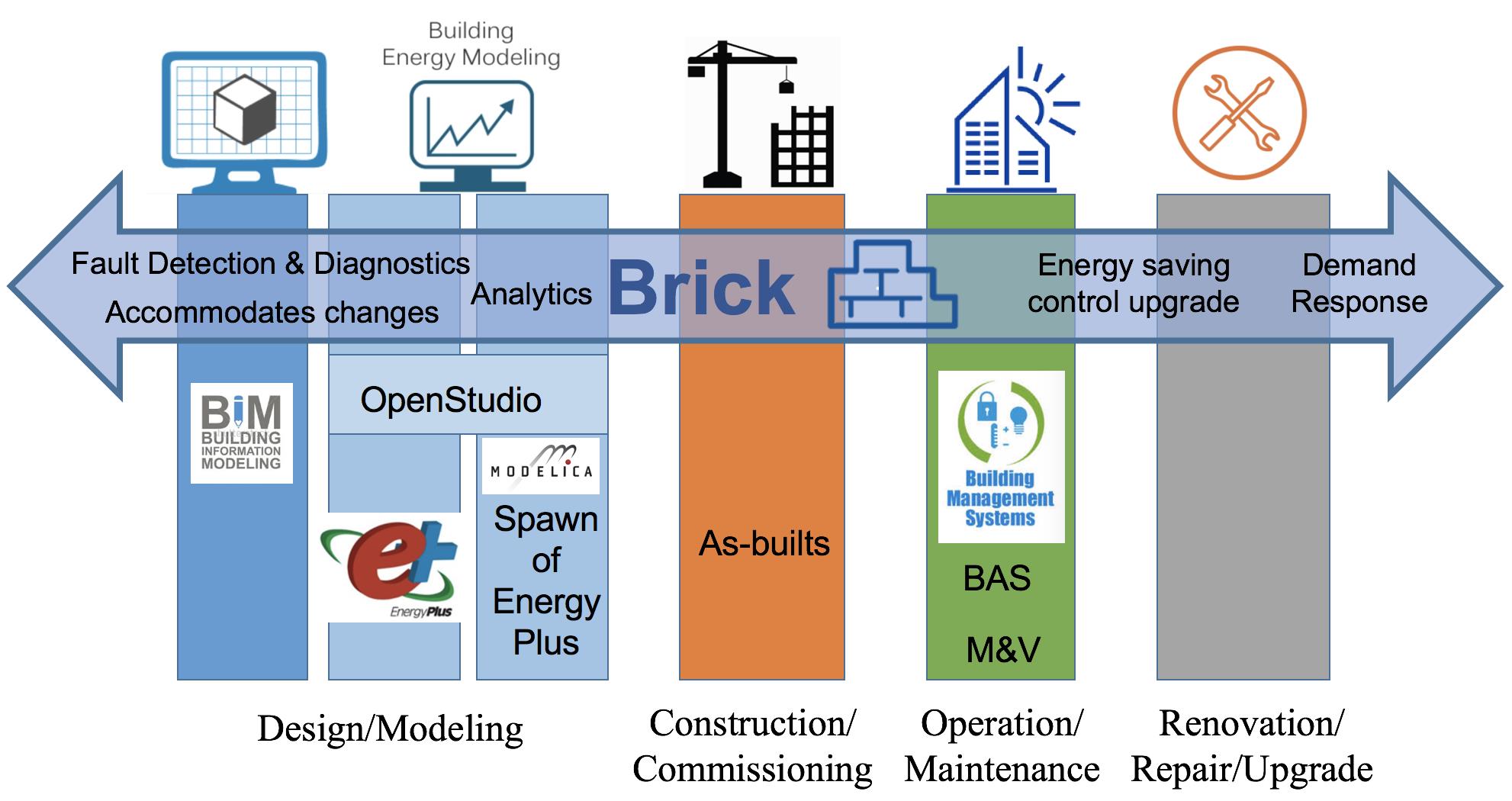Energy Use in Buildings, Behavior & Decision-Making
Brick: Portable Analytics, Modeling & Controls in Buildings
This project aims to develop a nascent open-source common data model, Brick, into a demonstrated and tested tool that, through the implementation of advanced algorithms and analysis, can enable the scaling of major energy savings, improved building performance, and grid responsiveness across commercial buildings at low cost.
Research teams at UC Berkeley and LBNL are working with Johnson Controls International to (1) expand the Brick schema, (2) develop tools and translators for adding information to Brick models, (3) develop an open-source building analytics platform, (4) develop and test open-source building analytics and controls applications on multiple buildings, and (5) develop a technology transition plan.
Potential impact: Brick can enable synergies among Building Information Modeling (BIM), Building Energy Modeling (BEM), Building Automation Systems (BAS), sensors, and controls by instilling a universal schema that these disparate tools can all use. Thus, efforts in building a BIM can translate easily into a BEM in design, and into BAS for improved operation for new buildings. Extracting data from BAS in existing buildings can inform BEM and feed into analytics for improved performance and manipulating energy demand to follow supply.
Critical success factors include 1) extending the Brick schema to include a greater number of buildings and systems, 2) publishing an open-source library of portable analytics, modeling, and controls used by multiple buildings, 3) evaluating potential for energy savings through analysis and control applications in multiple buildings, and 4) expanding the adoption of Brick by more organizations.

